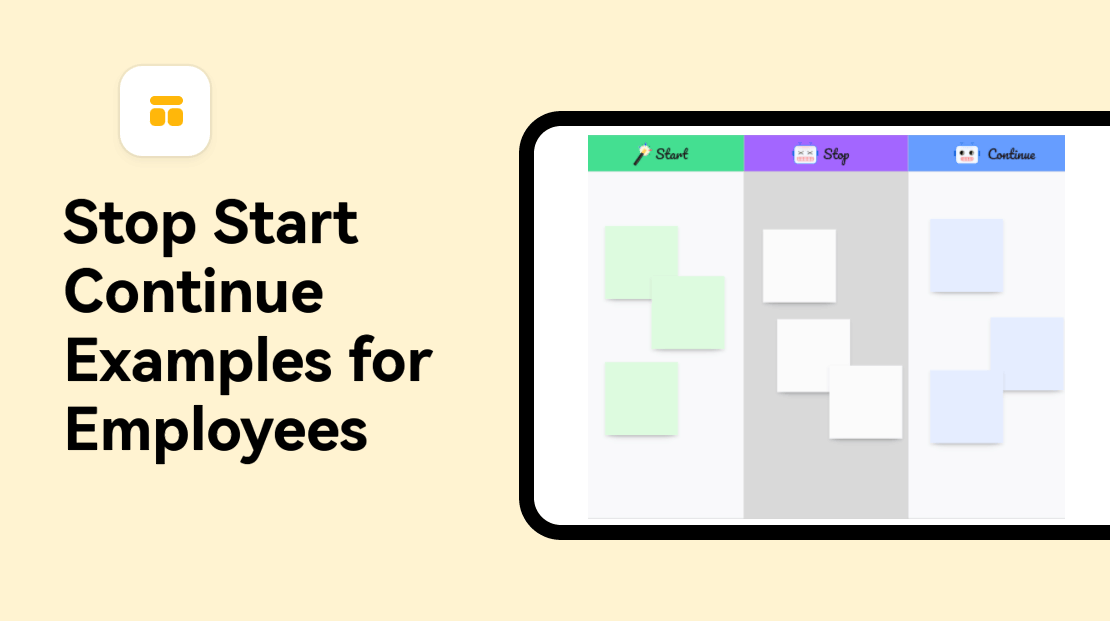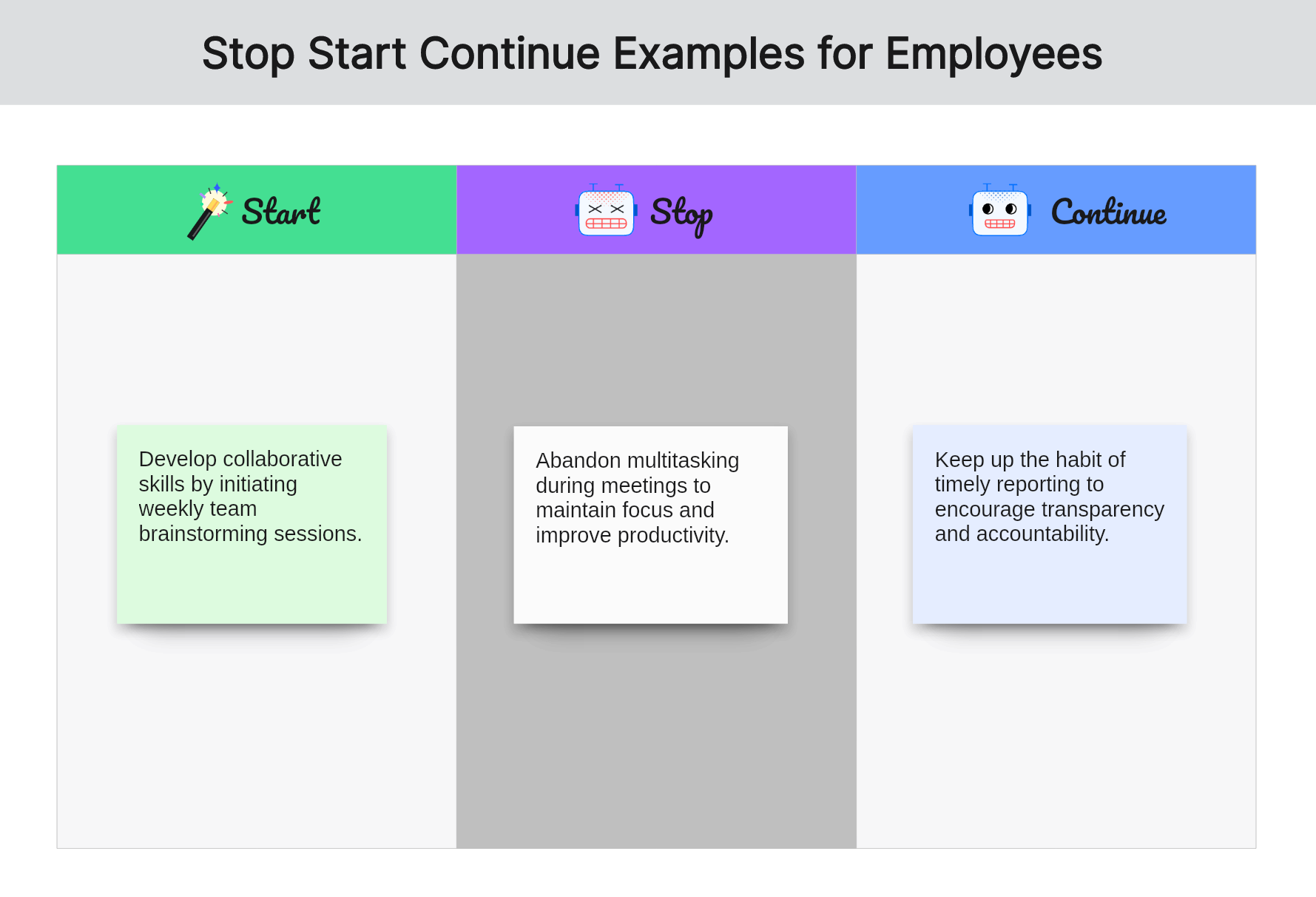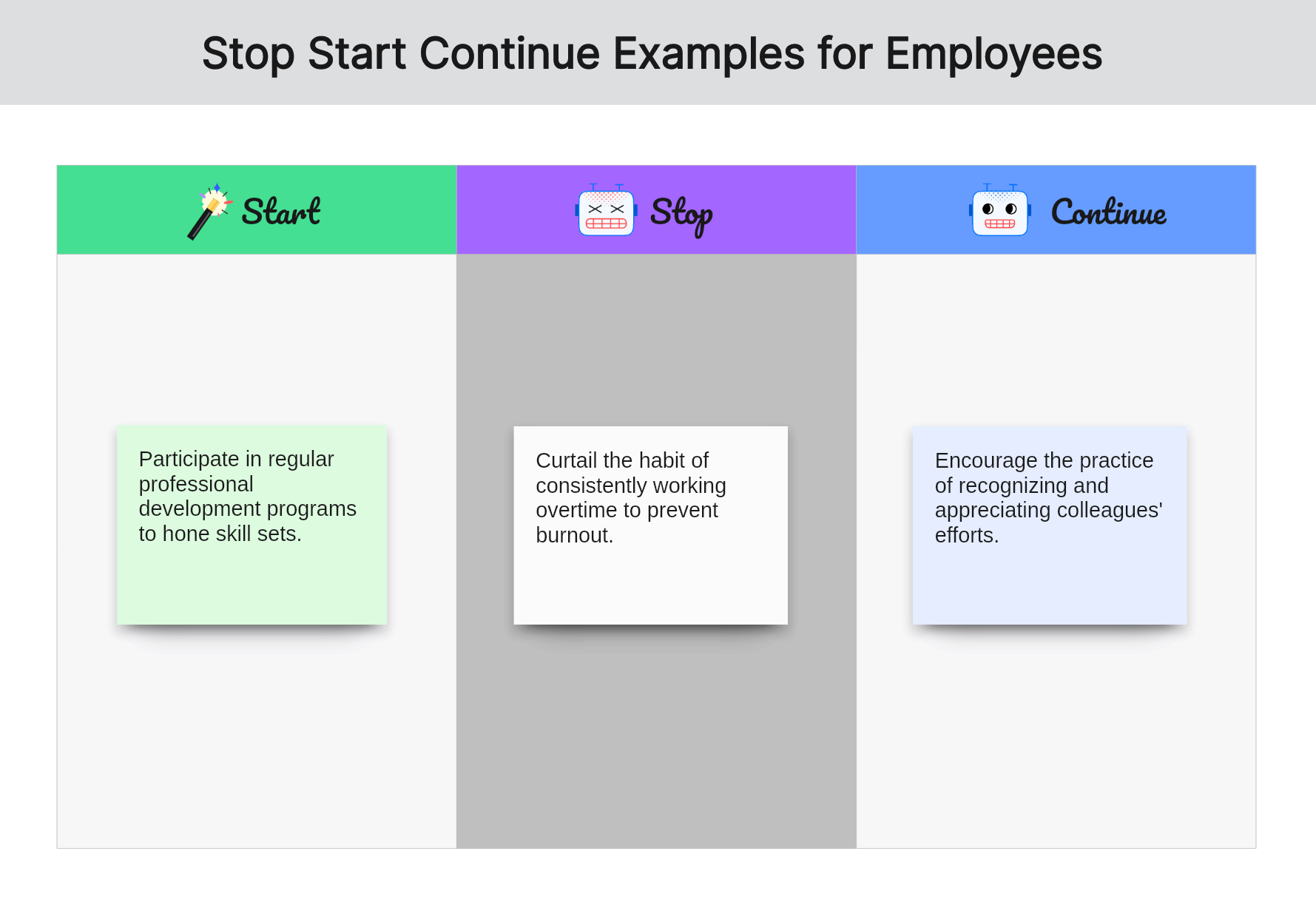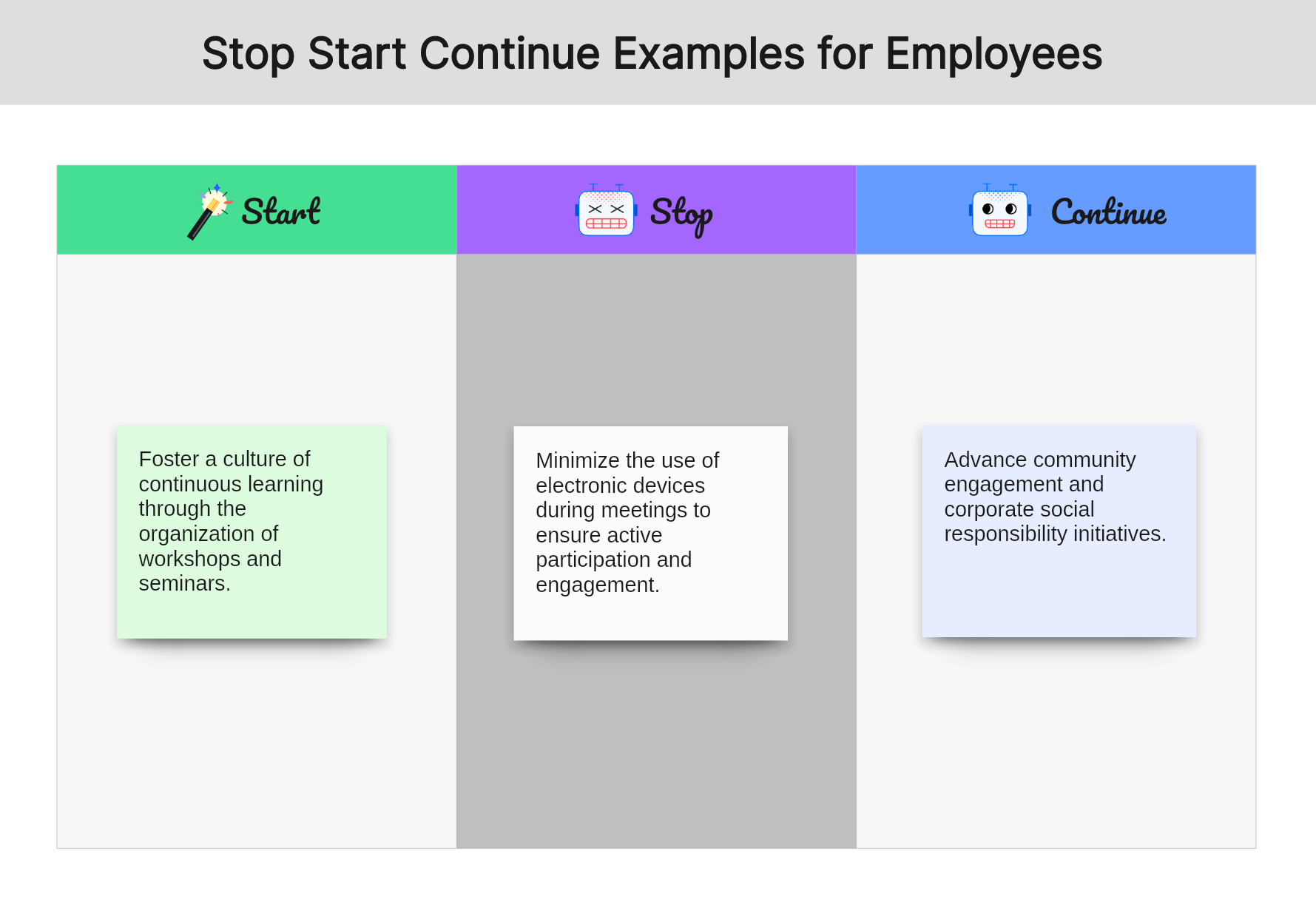In today's rapidly evolving corporate landscape, nurturing the growth and development of employees is not just a choice but a necessity for organizational success. To achieve this, effective communication and feedback mechanisms are vital. One powerful tool that has gained recognition in fostering this growth and facilitating harmonious teamwork is the "Stop Start Continue" method.
In this comprehensive guide, we'll explore the essence of the stop start continue approach and provide you start stop continue feedback examples for employees to implement in your workplace. Keep reading!

What Is Start Stop Continue
In any progressive organization, the need for structured and constructive feedback is pivotal in fostering growth and harmony in the team. The "Start Stop Continue" method is a simplistic yet profound tool to facilitate this essential communication within a workplace. This method categorically divides feedback into three distinct sections: Start, Stop, and Continue. Let's delve deeper into what each segment entails:
Start
Identify and implement new beneficial practices or behaviors that can promote personal and organizational growth.
Stop
Recognize and discontinue unproductive or harmful habits and practices that may be impeding progress or fostering a negative work environment.
Continue
Acknowledge and sustain positive and successful actions and strategies already in place, encouraging consistency and fostering a positive work culture.
This method promotes continuous improvement and collaboration in the workplace, facilitating a balanced view of operations, and helping in fostering a proactive and harmonious work environment.
5 Stop Start Continue Examples for Employees
Here are some stop start continue examples for employees:
Stop Start Continue Example for Employees - 01
Start: Develop collaborative skills by initiating weekly team brainstorming sessions.
Stop: Abandon multitasking during meetings to maintain focus and improve productivity.
Continue: Keep up the habit of timely reporting to encourage transparency and accountability.

Stop Start Continue Example for Employees - 02
Start: Participate in regular professional development programs to hone skill sets.
Stop: Curtail the habit of consistently working overtime to prevent burnout.
Continue: Encourage the practice of recognizing and appreciating colleagues' efforts.

Stop Start Continue Example for Employees - 03
Start: Cultivate a habit of regular self-reflection to identify areas for personal growth.
Stop: Discourage the casual sharing of sensitive information to uphold confidentiality.
Continue: Maintain proactive communication to foster team synergy and project coordination.

Stop Start Continue Example for Employees - 04
Start: Adopt a proactive approach to problem-solving by foreseeing potential issues and create solutions beforehand.
Stop: Avoid participating in workplace gossip to nurture a more positive work environment.
Continue: Uphold the company's core values and principles in daily activities and decisions.

Stop Start Continue Example for Employees - 05
Start: Foster a culture of continuous learning through the organization of workshops and seminars.
Stop: Minimize the use of electronic devices during meetings to ensure active participation and engagement.
Continue: Advance community engagement and corporate social responsibility initiatives.

Key Takeaway: A Start Stop Continue Template and a One-stop Tool
Incorporating the stop start continue method into your organizational strategy can be a valuable endeavor. To streamline this process effectively, consider utilizing a pre-designed template. This template serves as a convenient tool to collect and analyze feedback systematically.
I recommend exploring the Boardmix’s templates, which not only simplifies the feedback process but also encourages a culture of growth and improvement within your workplace. It offers a structured approach to soliciting input from your team members and can be a valuable asset in enhancing your organizational strategies.









